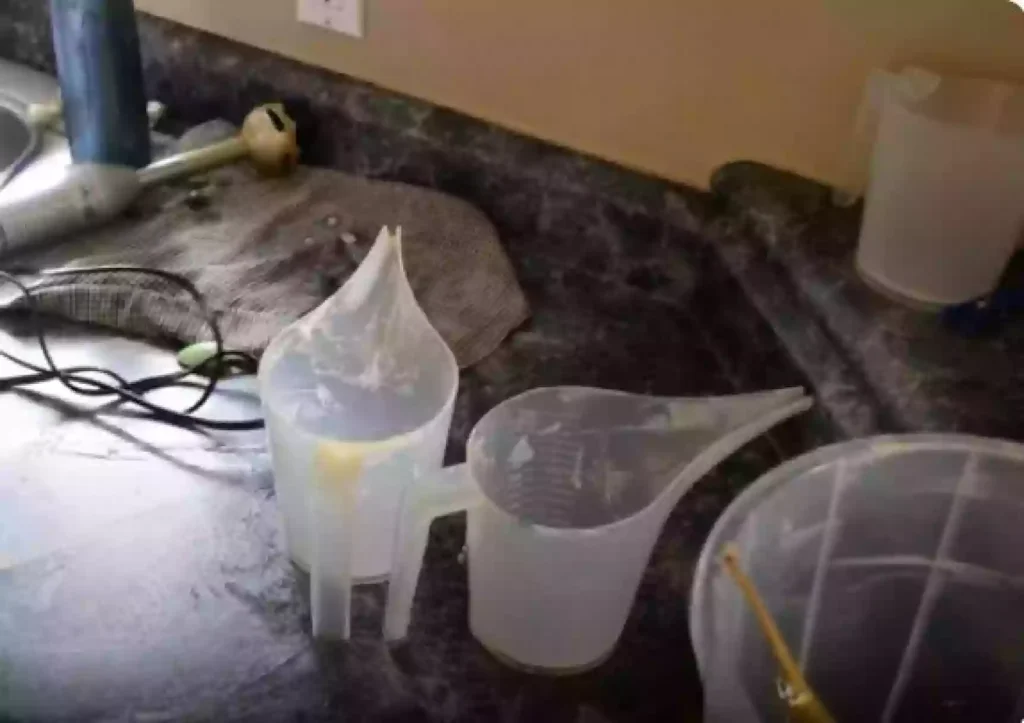How to Clean Soap-Making Tools
Soap-making is a delightful and fulfilling hobby that allows us to create personalized soap bars. However, after indulging in the creative process, we are often left with cleaning our soap-making tools. Although cleaning may seem like a daunting chore, fear not! We have gathered some quick and easy cleaning hacks that will help you maintain the longevity and cleanliness of your beloved soap-making tools.

Gather Your Cleaning Tools
Collect the tools you need to clean properly and effectively before you clean. Make sure you have the following items on hand:
• Warm water
• Gentle dish soap
• White vinegar
• Soft-bristle brush
• Microfiber cloth
• Rubbing alcohol
• Soft, non-abrasive sponge
Having these cleaning supplies handy will make the job much easier and more enjoyable.
Cleaning Your Soap-Making Containers
Remove Residual Soap:
Begin by removing any excess soap residue from your soap-making containers. Gently scrape off any remaining soap from the sides of the container using a soft-bristle brush or spatula.
Pre-rinse with Warm Water:
Rinse the containers with warm water to eliminate any loose soap particles. This will help prevent them from clogging your drains or causing unnecessary residue buildup.
Soak in Warm Soapy Water:
Fill your sink or basin with warm water and add a few drops of gentle dish soap. Submerge your soap-making containers in the soapy water and allow them to soak for a few minutes. This will help loosen any stubborn soap residue and make it easy to remove.
Scrub Gently:
After soaking, take your soft-bristle brush or sponge and gently scrub the inside and outside surfaces of the containers. Pay extra attention to areas where soap residue tends to accumulate, such as corners and crevices.
Rinse Thoroughly:
Once you have successfully scrubbed away the soap residue, rinse the containers thoroughly with warm water. Make sure all traces of soap and cleaning solution are removed.
Sanitize with Vinegar:
Mix equal parts of white vinegar and water in a spray bottle. Spritz the solution onto the containers, ensuring all surfaces are covered. Allow the vinegar mixture to sit for a few minutes before rinsing the containers with warm water.
Dry Completely:
After rinsing, use a microfiber cloth to dry the containers thoroughly. Ensure they are completely dry before storing them away to prevent mold or mildew growth.
Cleaning Your Soap-Making Utensils
Remove Excess Soap:
Similar to the cleaning process for containers, remove any excess soap from your soap-making utensils. Scrape off any stubborn soap residue using a soft-bristle brush or spatula.
Prep a Warm Soapy Bath:
Fill a sink or basin with warm water and add a few drops of gentle dish soap. Create a bath for your utensils by fully immersing them in the soapy water. Allow them to soak for a few minutes, allowing the soap residue to soften.
Scrub and Rinse:
Using a soft-bristle brush or sponge scrub the utensils to remove any remaining soap residue. Pay attention to crevices and hard-to-reach areas where soap residue tends to accumulate. Rinse the utensils thoroughly with warm water to remove all traces of soap.
Disinfect with Rubbing Alcohol:
To ensure your soap-making utensils are properly sanitized, use a soft cloth dampened with rubbing alcohol to wipe down all surfaces. Rubbing alcohol will help eliminate bacteria or germs that might be lingering on the utensils.
Dry Completely:
Once you have finished cleaning and sanitizing your soap-making utensils, allow them to air dry completely. The drying process will go quickly if you lay them on a clean, dry towel or a microfiber cloth.
Final Thoughts
Cleaning your soap-making tools might initially seem like a tedious task, but with the right approach and these quick cleaning hacks, it becomes an effortless part of the soap-making journey. By removing soap residue and ensuring proper sanitation, your tools will remain in top condition, ready for your next batch of beautiful handmade soaps. With these simple cleaning tips and tricks, you can maintain the longevity and cleanliness of your beloved soap-making tools, allowing you to fully enjoy creating your personalized soap bars. Happy cleaning!